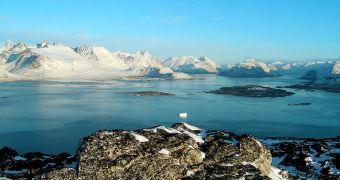According to the conclusions of a new scientific study, it would appear that global sea levels are growing now faster than they did over the past 2,000 years. Researchers also found a clear correlation between global average surface temperature and sea level.
The study focused on constructing a long-term model of how sea levels varied over the past couple of millennia, and then correlated this datasets with global surface temperature data spanning the same period of time. The climate data were derived from several sources to ensure maximum accuracy.
The international research team that led the investigation explains that sea level rise is extremely dangerous to the world, given the fact that millions of people live on or in close proximity to shorelines. Sea level increases could displace or harm a vast portion of the world's population.
University of Pennsylvania scientists – who were a part of the international endeavor – say that the correlation they discovered is very strong, and that the research again demonstrates what climate scientists have known for many years.
“Sea-level rise is a potentially disastrous outcome of climate change, as rising temperatures melt land-based ice and warm ocean waters,"” explains Penn Sea Level Research Laboratory director Benjamin Horton, who is also an associate professor at the university.
“Scenarios of future rise are dependent upon understanding the response of sea level to climate changes. Accurate estimates of past sea-level variability provide a context for such projections,” adds Yale University Climate and Energy Institute expert Andrew Kemp.
The model revealed that sea levels around the world remained relatively stable between 200 BC to 1,000 AD. However, the Medieval Climate Anomaly began in the 11th century, and sea levels began rising. They continued to do so, at a rate of ½ millimeters per year, for four centuries.
When the Little Ice Age began, in the 15th century, a 400-year period of sea level steadiness ensued again, ending in the 19th century. After that time, water began rising again, this time at a rate of 2 millimeters per year. This is the steepest climb in more than 2,000 years.
The rise coincides with the accumulation of pollutants in Earth's atmosphere, caused by human industries. Massive releases of carbon dioxide gas started causing a greenhouse effect, that is continuing to become more intense even today.
“The data from the past help to calibrate our model and will improve sea-level rise projections under scenarios of future temperature rise,” team scientist Stefan Rahmstorf concludes, quoted by Daily Galaxy.

 14 DAY TRIAL //
14 DAY TRIAL //